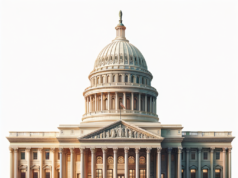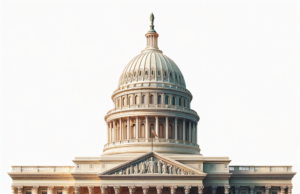Contents
- 1 Understanding the Alarming Increase in School Shootings Across the Nation
- 2 Analyzing the Factors Contributing to the Rise in School Violence
- 3 The Impact of School Shootings on Students, Families, and Communities
- 4 Legislative Responses: Evaluating Current Policies and Their Effectiveness
- 5 Strategies for Prevention: What Schools and Communities Can Do Now
- 6 The Role of Mental Health Support in Addressing School Violence Issues
In recent years, the United States has witnessed a troubling and alarming surge in school shootings, prompting urgent calls for action from educators, parents, and policymakers alike. The frequency and severity of these incidents have raised significant concerns about the safety and well-being of students across the nation. As communities grapple with the aftermath of these tragedies, it is imperative to understand the underlying causes, the impact on those affected, and the potential strategies for prevention and intervention.
Understanding the Alarming Increase in School Shootings Across the Nation
The rise in school shootings has become a distressing reality in American society, with statistics revealing a sharp increase in incidents over the past decade. According to data from the Gun Violence Archive, the number of school shootings has more than doubled since 2018, with hundreds of incidents reported annually. This trend has not only instilled fear among students and parents but has also sparked a national conversation about the adequacy of current safety measures in educational institutions. The increasing prevalence of these violent acts raises critical questions about the effectiveness of existing policies and the urgent need for comprehensive solutions to ensure the safety of students and staff.
Analyzing the Factors Contributing to the Rise in School Violence
Several interrelated factors contribute to the alarming rise in school shootings, including access to firearms, societal influences, and mental health issues. The easy availability of guns in the United States has been a significant factor, with many shooters obtaining weapons from their homes or through legal means. Additionally, the pervasive influence of social media and violent video games has desensitized some individuals to violence, potentially normalizing aggressive behavior. Furthermore, mental health challenges, often exacerbated by social isolation and bullying, can lead to tragic outcomes when left unaddressed. Understanding these factors is crucial for developing effective prevention strategies that address the root causes of school violence.
The Impact of School Shootings on Students, Families, and Communities
The repercussions of school shootings extend far beyond the immediate victims, affecting students, families, and entire communities. Survivors often experience long-lasting psychological effects, including post-traumatic stress disorder (PTSD), anxiety, and depression. Families of victims endure profound grief and loss, while communities face the challenge of rebuilding trust and safety in their schools. The pervasive fear of violence can also hinder students’ academic performance and social development, as they grapple with the emotional toll of living in a climate of uncertainty. The collective trauma experienced by communities can lead to a cycle of fear and mistrust, further complicating efforts to foster safe and supportive educational environments.
Legislative Responses: Evaluating Current Policies and Their Effectiveness
In response to the growing crisis of school shootings, lawmakers at both state and federal levels have proposed various legislative measures aimed at enhancing school safety and preventing gun violence. Initiatives such as universal background checks, red flag laws, and restrictions on high-capacity magazines have gained traction in some regions. However, the effectiveness of these policies remains a topic of debate. Critics argue that many proposed measures lack the necessary enforcement mechanisms or fail to address the underlying issues contributing to school violence. Additionally, political polarization surrounding gun control has hindered the passage of comprehensive reforms, leaving many schools vulnerable to the threat of violence. A thorough evaluation of existing policies is essential to determine their impact and identify areas for improvement.
Strategies for Prevention: What Schools and Communities Can Do Now
To combat the rising tide of school shootings, schools and communities must adopt proactive strategies aimed at prevention and preparedness. Implementing comprehensive safety plans that include regular drills, threat assessment protocols, and collaboration with local law enforcement can enhance school security. Furthermore, fostering a positive school climate through anti-bullying programs, conflict resolution training, and peer support initiatives can help mitigate the factors that contribute to violence. Engaging parents and community members in discussions about safety and mental health resources is also vital for creating a supportive environment. By prioritizing prevention and preparedness, schools can take significant steps toward safeguarding their students and staff.
The Role of Mental Health Support in Addressing School Violence Issues
Mental health support plays a critical role in addressing the complex issues surrounding school violence. Schools must prioritize the integration of mental health resources, including counseling services and crisis intervention programs, to support students facing emotional and psychological challenges. Early identification and intervention can help mitigate the risk of violence by providing at-risk individuals with the necessary tools and support to cope with their struggles. Additionally, fostering open communication about mental health within schools can help reduce stigma and encourage students to seek help when needed. By prioritizing mental health, schools can create a more supportive environment that addresses the underlying issues contributing to violence and promotes overall well-being.
The alarming surge in school shootings is a crisis that demands urgent action from all sectors of society. As we strive to understand the factors contributing to this troubling trend, it is essential to recognize the profound impact on students, families, and communities. Legislative responses must be evaluated for their effectiveness, and proactive strategies for prevention must be implemented at the local level. By prioritizing mental health support and fostering a culture of safety and inclusivity, we can work together to create educational environments where students can thrive free from the fear of violence. The time for action is now, and it is imperative that we come together to protect our children and ensure their right to a safe and secure education.


























